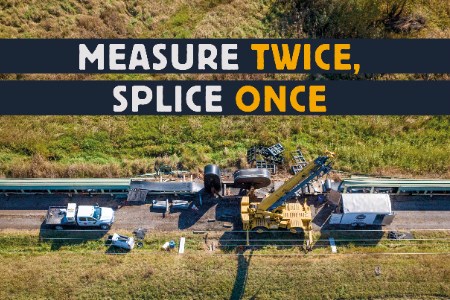Measure Twice, Splice Once
Published by Jess Watts,
Editorial Assistant
World Coal,

Picture this: you just bought a house built in 1954. It seemed like a great deal – charming, sturdy, and affordable. Sure, the fuse box needed upgrading, but that was manageable. Then, as the electrician works, more issues emerge: outdated wiring, hidden leaks, dry rot. That great bargain quickly turns into an expensive nightmare.
Hidden factors like these can cause huge headaches – not just in homes, but in material handling operations too. Take conveyor belts, for example. Used belts can seem like a cost-saving goldmine, but without a clear understanding of how belts age and what factors to test, that bargain belt might leave you footing a much larger bill down the line.
The good news is, these ‘hidden’ factors are not impossible to find. With some basic tools and understanding, an operator can feel more confident in their choices, or in suggestions from a service provider.
The allure and potential pitfalls of used belt
Every industry struggles to maintain the balance between costs, profits, and return on investment. Add to that the constant ebb and flow of opinions and directives from shareholders and upper management. The next generation of operators and plant managers is entering a work environment that has grown more complex and expensive, and are navigating it without the advantage of years of experience.
These people may find themselves inheriting an operation that has been running on a razor’s edge. Now, they are tasked with catching up on maintenance issues that have fallen by the wayside. With all these factors, pressures, and expenses clamouring for attention, it only makes sense to search for low-hanging fruit in the budget that can get the job done at the lowest cost.
Enter used belt. A new operator may look at the cost of new belt specified for their conveyor system, then compare this price to heavier-duty used belt. The used belt costs less and seems like a logical choice – less money, more belt (see Figure 1).
Experience tells a different story. Even assuming the used belt is in good condition and everything goes well, there remains the problem of improperly matching a belt to an existing system. Heavier belts require larger pulleys, more robust motors, and so on. An even worse situation is purchasing a different weight of belt and trying to splice it with the belt currently on the conveyor.
To put it another way, used conveyor belts bring the same types of challenges as used tires. It is possible to find decent used tires, but usually, they are for sale because someone took them off their vehicle for a reason. One of them may fail at an inconvenient time. Uneven wear will make the car more difficult to drive. Replacing only some of the tires will create even more issues (read: mixing old and new belt is not a good idea).
A new driver may feel the pressure to go for the cheapest option and ‘hope for the best.’ It may be okay, or it may cost even more and possibly create a dangerous situation.
This is a preview of an article that was originally published in Issue 1 of World Coal 2025.
Subscribe to World Coal for free to read this article in full and many more here.
Read the article online at: https://www.worldcoal.com/coal/13082025/measure-twice-splice-once/
You might also like
Smithers announces AsiaCoke 2026 details and location
Smithers has announced that the AsiaCoke 2026 summit will take place from 30 March to 1 April 2026 in Jakarta, Indonesia, and released details regarding the event programme.

